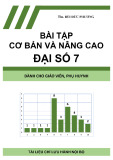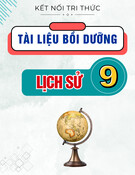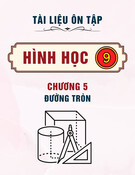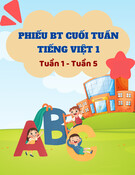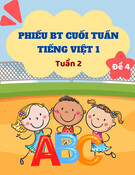
☺ The best problems from around the world Cao Minh Quang
3
01
13th Mexican 1999
A1. 1999 cards are lying on a table. Each card has a red side and a black side and can be
either side up. Two players play alternately. Each player can remove any number of cards
showing the same color from the table or turn over any number of cards of the same color.
The winner is the player who removes the last card. Does the first or second player have a
winning strategy?
A2. Show that there is no arithmetic progression of 1999 distinct positive primes all less than
12345.
A3. P is a point inside the triangle ABC. D, E, F are the midpoints of AP, BP, CP. The lines
BF, CE meet at L; the lines CD, AF meet at M; and the lines AE, BD meet at N. Show that
area DNELFM = (1/3) area ABC. Show that DL, EM, FN are concurrent.
B1. 10 squares of a chessboard are chosen arbitrarily and the center of each chosen square is
marked. The side of a square of the board is 1. Show that either two of the marked points are a
distance ≤ √2 apart or that one of the marked points is a distance 1/2 from the edge of the
board.
B2. ABCD has AB parallel to CD. The exterior bisectors of ∠B and ∠C meet at P, and the
exterior bisectors of ∠A and ∠D meet at Q. Show that PQ is half the perimeter of ABCD.
B3. A polygon has each side integral and each pair of adjacent sides perpendicular (it is not
necessarily convex). Show that if it can be covered by non-overlapping 2 x 1 dominos, then at
least one of its sides has even length.

☺ The best problems from around the world Cao Minh Quang
3
02
14th Mexican 2000
A1. A, B, C, D are circles such that A and B touch externally at P, B and C touch externally
at Q, C and D touch externally at R, and D and A touch externally at S. A does not intersect
C, and B does not intersect D. Show that PQRS is cyclic. If A and C have radius 2, B and D
have radius 3, and the distance between the centers of A and C is 6, find area PQRS.
A2. A triangle is constructed like that below, but with 1, 2, 3, ... , 2000 as the first row. Each
number is the sum of the two numbers immediately above. Find the number at the bottom of
the triangle.
1 2 3 4 5
3 5 7 9
8 12 16
20 28
48
A3. If A is a set of positive integers, take the set A' to be all elements which can be written as
± a1 ± a2 ... ± an, where ai are distinct elements of A. Similarly, form A" from A'. What is the
smallest set A such that A" contains all of 1, 2, 3, ... , 40?
B1. Given positive integers a, b (neither a multiple of 5) we construct a sequence as follows:
a1 = 5, an+1 = a an + b. What is the largest number of primes that can be obtained before the
first composite member of the sequence?
B2. Given an n x n board with squares colored alternately black and white like a chessboard.
An allowed move is to take a rectangle of squares (with one side greater than one square, and
both sides odd or both sides even) and change the color of each square in the rectangle. For
which n is it possible to end up with all the squares the same color by a sequence of allowed
moves?
B3. ABC is a triangle with ∠B > 90o. H is a point on the side AC such that AH = BH and
BH is perpendicular to BC. D, E are the midpoints of AB, BC. The line through H parallel to
AB meets DE at F. Show that ∠BCF = ∠ACD.

☺ The best problems from around the world Cao Minh Quang
3
03
15th Mexican 2001
A1. Find all 7-digit numbers which are multiples of 21 and which have each digit 3 or 7.
A2. Given some colored balls (at least three different colors) and at least three boxes. The
balls are put into the boxes so that no box is empty and we cannot find three balls of different
colors which are in three different boxes. Show that there is a box such that all the balls in all
the other boxes have the same color.
A3. ABCD is a cyclic quadrilateral. M is the midpoint of CD. The diagonals meet at P. The
circle through P which touches CD at M meets AC again at R and BD again at Q. The point S
on BD is such that BS = DQ. The line through S parallel to AB meets AC at T. Show that AT
= RC.
B1. For positive integers n, m define f(n,m) as follows. Write a list of 2001 numbers ai,
where a1 = m, and ak+1 is the residue of ak
2 mod n (for k = 1, 2, ... , 2000). Then put f(n,m) = a1
- a2 + a3 - a4 + a5 - ... + a2001. For which n ≥ 5 can we find m such that 2 ≤ m ≤ n/2 and f(m,n)
> 0?
B2. ABC is a triangle with AB < AC and ∠A = 2 ∠C. D is the point on AC such that CD =
AB. Let L be the line through B parallel to AC. Let L meet the external bisector of ∠A at M
and the line through C parallel to AB at N. Show that MD = ND.
B3. A collector of rare coins has coins of denominations 1, 2, ... , n (several coins for each
denomination). He wishes to put the coins into 5 boxes so that: (1) in each box there is at
most one coin of each denomination; (2) each box has the same number of coins and the same
denomination total; (3) any two boxes contain all the denominations; (4) no denomination is
in all 5 boxes. For which n is this possible?

☺ The best problems from around the world Cao Minh Quang
3
0
4
16th Mexican 2002
A1. The numbers 1 to 1024 are written one per square on a 32 x 32 board, so that the first
row is 1, 2, ... , 32, the second row is 33, 34, ... , 64 and so on. Then the board is divided into
four 16 x 16 boards and the position of these boards is moved round clockwise, so that AB
goes to DA, DC goes to CB
then each of the 16 x 16 boards is divided into four equal 8 x 8 parts and each of these is
moved around in the same way (within the 16 x 16 board). Then each of the 8 x 8 boards is
divided into four 4 x 4 parts and these are moved around, then each 4 x 4 board is divided into
2 x 2 parts which are moved around, and finally the squares of each 2 x 2 part are moved
around. What numbers end up on the main diagonal (from the top left to bottom right)?
A2. ABCD is a parallelogram. K is the circumcircle of ABD. The lines BC and CD meet K
again at E and F. Show that the circumcenter of CEF lies on K.
A3. Does n2 have more divisors = 1 mod 4 or = 3 mod 4?
B1. A domino has two numbers (which may be equal) between 0 and 6, one at each end. The
domino may be turned around. There is one domino of each type, so 28 in all. We want to
form a chain in the usual way, so that adjacent dominos have the same number at the adjacent
ends. Dominos can be added to the chain at either end. We want to form the chain so that after
each domino has been added the total of all the numbers is odd. For example, we could place
first the domino (3,4), total 3 + 4 = 7. Then (1,3), total 1 + 3 + 3 + 4 = 11, then (4,4), total 11
+ 4 + 4 = 19. What is the largest number of dominos that can be placed in this way? How
many maximum-length chains are there?
B2. A trio is a set of three distinct integers such that two of the numbers are divisors or
multiples of the third. Which trio contained in {1, 2, ... , 2002} has the largest possible sum?
Find all trios with the maximum sum.
B3. ABCD is a quadrilateral with ∠A = ∠B = 90o. M is the midpoint of AB and ∠CMD =
90o. K is the foot of the perpendicular from M to CD. AK meets BD at P, and BK meets AC
at Q. Show that ∠AKB = 90o and KP/PA + KQ/QB = 1.

☺ The best problems from around the world Cao Minh Quang
3
05
17th Mexican 2003
A1. Find all positive integers with two or more digits such that if we insert a 0 between the
units and tens digits we get a multiple of the original number.
A2. A, B, C are collinear with B betweeen A and C. K1 is the circle with diameter AB, and
K2 is the circle with diameter BC. Another circle touches AC at B and meets K1 again at P
and K2 again at Q. The line PQ meets K1 again at R and K2 again at S. Show that the lines AR
and CS meet on the perpendicular to AC at B.
A3. At a party there are n women and n men. Each woman likes r of the men, and each man
likes r of then women. For which r and s must there be a man and a woman who like each
other?
B1. The quadrilateral ABCD has AB parallel to CD. P is on the side AB and Q on the side
CD such that AP/PB = DQ/CQ. M is the intersection of AQ and DP, and N is the intersection
of PC and QB. Find MN in terms of AB and CD.
B2. Some cards each have a pair of numbers written on them. There is just one card for each
pair (a,b) with 1 ≤ a < b ≤ 2003. Two players play the following game. Each removes a card
in turn and writes the product ab of its numbers on the blackboard. The first player who
causes the greatest common divisor of the numbers on the blackboard to fall to 1 loses. Which
player has a winning strategy?
B3. Given a positive integer n, an allowed move is to form 2n+1 or 3n+2. The set Sn is the set
of all numbers that can be obtained by a sequence of allowed moves starting with n. For
example, we can form 5 → 11 → 35 so 5, 11 and 35 belong to S5. We call m and n
compatible if Sm ∩ Sn is non-empty. Which members of {1, 2, 3, ... , 2002} are compatible
with 2003?

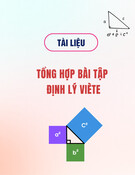


![Bài tập so sánh hơn và so sánh nhất của tính từ [kèm đáp án/mới nhất]](https://cdn.tailieu.vn/images/document/thumbnail/2025/20250808/nhatlinhluong27@gmail.com/135x160/77671754900604.jpg)
![Tài liệu tham khảo Tiếng Anh lớp 8 [mới nhất/hay nhất/chuẩn nhất]](https://cdn.tailieu.vn/images/document/thumbnail/2025/20250806/anhvan.knndl.htc@gmail.com/135x160/54311754535084.jpg)
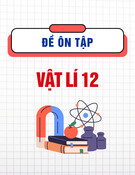
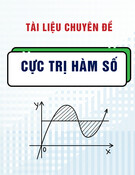
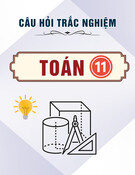
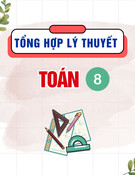
![Tài liệu Lý thuyết và Bài tập Tiếng Anh lớp 6 [Mới nhất]](https://cdn.tailieu.vn/images/document/thumbnail/2025/20250802/hoihoangdang@gmail.com/135x160/18041754292798.jpg)
